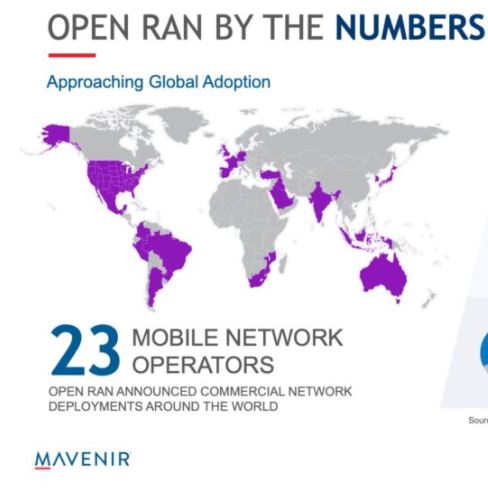“Open RAN will play a modest role in 5G but will be a fundamental of 6G.”
So commented CCS Insights’ Richard Webb at their annual predictions event last week. The argument is largely that operators are, in many cases, far down the track with 5G deployments already and O-RAN comes too late to play a significant role.
Meanwhile, apart from notable exceptions such as Rakuten and Dish, caution about a relatively unproven technology is also a concern. By the time 6G comes around those problems will [likely?] not apply.
RIC Rolling
Meanwhile, the value of the RAN Intelligence Controller (or RIC) can’t be underestimated. In essence it is a simple concept, as explained by Balaji Raghothaman of Keysight at the recent 6GSymposium: a module that collects together the existing resource management, control and other functions within the RAN.
“It takes in measurements from other parts of the RAN, processes them and provides outputs,” he explained, for example to optimise outcomes for a particular situation. While this is all functionality that already exists, a programmable RIC would be able to run third-party software, supporting a new application development environment.
“The RIC starts to look like the Apple Store,” noted John Baker, Mavenir’s SVP of Business Development. “The RIC App Store could have a [personalised] app sitting on the base station that’s just responsible for your individual services and which follows you around wherever you go.”
Raghothaman agreed, suggesting that any individual base station could ultimately host hundreds of these additional applications, “one of which could be to control the flight of drones, for example.”
If services beyond current 5G capabilities are going to be of value to different kinds of industries, this opportunity to either programme the RAN or develop software based upon its inputs will be a crucial element. It opens up levels of flexibility and innovation that telecoms players alone cannot deliver.
“When you open up interfaces it opens up the ecosystem for new players to come with innovations,” Ian Wong of Viavi and the O-RAN Alliance observed. “Open RAN allows many more companies to add value to their specific vertical. It allows for innovation both in the RAN and the services running on top of it.”
The Net Neutrality Problem
To gain the maximum benefit from such capabilities may require a change in the way that regulators approach service delivery. BT’s CEO Marc Allera recently highlighted the question of net neutrality in an interview with CCS Insight, commenting that the pandemic has changed perceptions of connectivity issues. “Pricing isn’t the most important thing anymore, it’s the reliability and quality of the networks.”
Current net neutrality regulations could restrict the ability of applications in the RIC (known as X-Apps or R-Apps) to provide guaranteed services or quality of service by prioritising one client’s traffic – or one type of traffic – over another.
In particular, without the ability to manage traffic optimally according to its requirements, capacity has to be provisioned for peak times. With growth in streaming video, and anticipated demands for high-bandwidth, low-latency content such as augmented or virtual reality, this seems increasingly unfeasible. As Allera noted, under net neutrality rules “there is no way of controlling the huge volume of traffic at peak times.”
If regulatory barriers can be overcome, there is scope for a wide variety of innovations – not just in the types of applications, but in terms of how services are sold. As Baker observed, “Innovators can sell along new lines under Open RAN. Not just speed and latency but security, reliability, coverage and more.”







